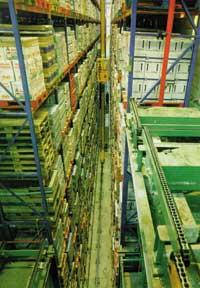Immediate operation of the packaging recycling management system
Packaging is a product, by legal definition, made with any material intended to contain, protect, use, distribute or present goods. Paper, cardboard, all kinds of plastics, glass and tetra-brick are the usual materials that make them up. These materials are therefore very different in terms of their characteristics and origin. Another important feature of these rubbish is that they make up most of the garbage bag, which in many cases accounts for 50% of its volume. In fact, this packaging is a fraction that has been growing uninterruptedly in recent decades and continues to grow: this growth is unstoppable both in industrialized countries and in the rest. This difficult situation is a direct consequence of the extraordinary growth of current consumption.
Not all sectors produce equal packaging waste

On the other hand, the quantities produced in urban centres and in rural areas are very different. The first one is certainly much more waste generating, since in the hamlets many products have been produced and recycled. However, in recent years plastic in rural areas has increased significantly due to new grass fermentation systems and the proliferation of greenhouses. To realize this, we just have to look at how the classic clams have been growing landscape in plastic grass bullets.
Packaging is widely used in industries. Although not normally mentioned, industry and commerce are the major producers of this type of garbage. On the other hand, the joint management of packaging with urban waste makes the production figures of the same are dispersed in the total urban waste.
Packaging, one of the main sections of urban solid waste, is also an environmental problem and not one of the smallest. In many cases the impacts produced by waste and its treatments have been mentioned and we will not repeat what has always been said here, except that the packaging, like most garbage, begin to generate impact during the exploitation of the raw material and at the time of its manufacture, so not only must be taken into account the damage caused by landfills or treatment plants in the assessment of the impacts.
Legislation and provisions for packaging recycling
In order to find a solution to the packaging problem, the European Union published in 1994 a directive establishing that, on the one hand, all packaging waste is recycled between 25% and 45% of the materials and, on the other, that at least 15% of the weight of each material is recycled. This directive establishes that these objectives are met by 2001. This has been maintained in 1997 to the Spanish legislation with a small supplement that supposes a 10% reduction in the number of packaging. However, this point does not appear in the development of the Law.
The law and its regulations establish that the management of packaging must be built around the so-called Green Point or Integrated System. Accordingly, packaging manufacturers, packaging companies and waste pickers will create a company that will manage the Integrated System and pay the management price. Ecoembes is born in Spain. However, the law leaves free sectors that work with certain material to separately create their own system. Glass and brass companies, for example, have worked this way and have already created their own system.
As already indicated, at the end of 1997 the company Ecoembes was created, among most manufacturers, users and waste pickers of packaging of Spain, for the management of the general system. Participants must pay annually the fee established according to their billing and declaration, upon imposition by the Environmental Administration of the amount of the kilo of each material.
Taking the first steps in the Basque territory
Waste management legally corresponds to municipalities or garbage communities. However, different ways can be used to transfer money from the Integrated System. In the Autonomous Community of the Basque Country, for example, money goes through the Basque Government's Vice-Ministry of Environment. They have signed an agreement between the Community Government and Ecoembes.
Municipalities and Communities must adhere to this agreement if they wish to receive funds. Each prize will be calculated based on the amount recycled. Each Historical Territory is making its own way: In Gipuzkoa, for example, if at first it was thought that all the communities and municipalities were grouped around the tax, at the last moment the commonwealth of San Marcos has decided to act on its own.
Buletina
Bidali zure helbide elektronikoa eta jaso asteroko buletina zure sarrera-ontzian











